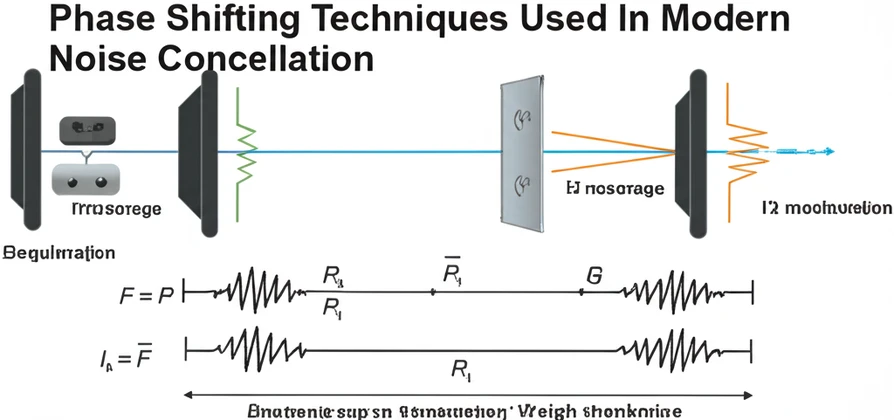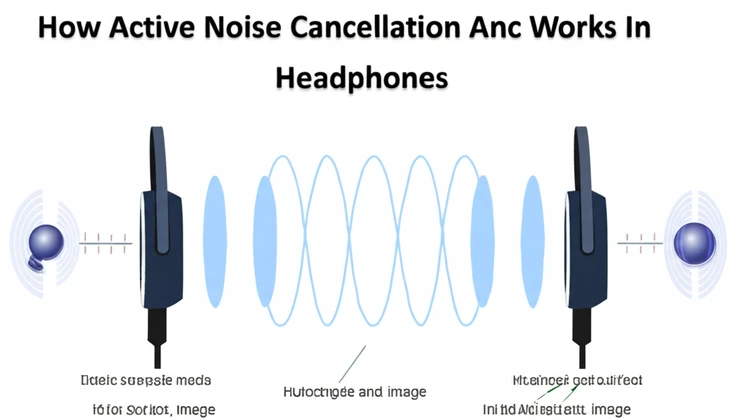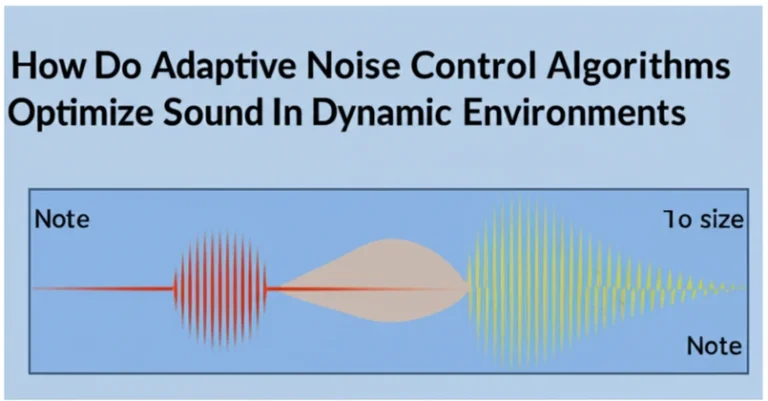
Phase-shifting techniques are at the heart of modern noise cancellation, transforming how we experience sound in our daily lives. From silencing the roar of airplane engines to creating tranquil home environments, these techniques offer a powerful way to control unwanted noise. This article delves into the intricacies of phase-shifting techniques used in modern noise cancellation, exploring how they work, their diverse applications, and the cutting-edge innovations shaping the future of sound.
Imagine a world where the drone of traffic disappears, leaving you immersed in your favorite music, or where the hum of machinery fades into the background, allowing for focused work.
This is the promise of phase-shifting noise cancellation. By manipulating the properties of sound waves, these technologies neutralize unwanted noise, creating quieter and more comfortable environments.
Phase-shifting techniques are integral to a growing range of devices, from noise-canceling headphones and automotive sound systems to sophisticated noise barriers and industrial equipment. This article will explore the core principles behind phase-shifting, its practical applications, and the ongoing innovations that are driving its widespread adoption in noise cancellation technology.
What Are Phase-Shifting Techniques?
Phase-shifting involves manipulating the phase of a sound wave to create destructive interference with another wave.
A sound wave’s phase represents its position within a cycle. When two sound waves of identical frequency and amplitude meet, but their phases are exactly opposite (180 degrees out of phase), they cancel each other out. This principle, known as destructive interference, is the foundation of phase-shifting noise cancellation.
Key Components of Phase-Shifting Noise Cancellation
- Microphones: Highly sensitive microphones detect ambient noise and capture its unique sound wave pattern, converting the acoustic vibrations into electrical signals.
- Signal Processors: Sophisticated signal processors analyze the captured sound wave, identifying its frequency and amplitude characteristics.
They then generate an inverted (out-of-phase) wave that mirrors the original but is shifted by 180 degrees.
- Speakers: Speakers emit the precisely engineered inverted wave. This “anti-noise” wave interacts with the original unwanted noise, leading to destructive interference and a reduction in the perceived sound level.
This coordinated process, involving precise detection, analysis, and generation of sound waves, forms the basis of noise-canceling systems across a wide spectrum of applications, from consumer electronics to industrial settings.
How Do Phase-Shifting Techniques Work?
Step 1: Noise Detection
Specialized microphones, strategically placed to capture the target noise, convert the incoming sound waves into electrical signals. These signals represent the unique characteristics of the unwanted noise.
Step 2: Phase Inversion
The electrical signals from the microphones are fed into a digital signal processor (DSP).
The DSP analyzes the incoming wave and creates an inverse wave with the same amplitude but an opposite phase. This means the peaks of the original wave align with the troughs of the inverted wave.
Step 3: Noise Cancellation
The DSP sends the inverted wave to the speakers. The emitted anti-noise aligns with the original noise, resulting in destructive interference.
The peaks and troughs of the two waves cancel each other out, effectively neutralizing the unwanted sound and creating a quieter environment.
Applications of Phase-Shifting in Noise Cancellation
Noise-Canceling Headphones
Leading headphone manufacturers utilize phase-shifting to create immersive listening experiences. These headphones are particularly effective at blocking consistent, low-frequency noises like the drone of airplane engines or the rumble of train tracks. The microphones within the headphones capture the ambient noise, and the internal processors generate the anti-noise to cancel it out.
Automotive Noise Control
Active Noise Control (ANC) systems in modern vehicles employ phase-shifting techniques to reduce road noise, engine noise, and other unwanted sounds within the cabin.
Strategically placed microphones and speakers work together to create zones of quiet, enhancing passenger comfort.
Environmental Noise Management
While traditional noise barriers rely on sound absorption and diffraction, active noise control systems are emerging as a more sophisticated solution in certain environments. These systems utilize phase-shifting to generate anti-noise that specifically targets and reduces noise pollution from sources like industrial equipment or traffic.
Smart Home Devices
Smart speakers and voice assistants employ phase-shifting for clearer voice recognition.
By filtering out background noise, these devices can more accurately interpret voice commands, improving the user experience.
Industrial Applications
Phase-shifting is used in industrial settings to reduce noise from machinery and other equipment, creating safer and more productive work environments. This can be particularly important in environments with loud and consistent noise sources.
Benefits of Phase-Shifting Techniques
Enhanced Listening Experience
By eliminating distractions, phase-shifting ensures clear audio for music, calls, and recordings, allowing for greater immersion and enjoyment.
Improved Productivity
Noise-canceling systems reduce workplace distractions, creating quieter environments where individuals can better focus and achieve higher levels of productivity.
Protection Against Noise Pollution
By mitigating harmful noise levels, phase-shifting contributes to a healthier environment, reducing stress and protecting hearing health over time.
Innovations in Phase-Shifting Technology
Real-Time Adaptation
Modern noise-canceling devices utilize adaptive algorithms that continuously analyze and adjust the phase-shifting process in real-time. This allows them to effectively address dynamic noise environments where the characteristics of the unwanted sound are constantly changing.
Hybrid Noise Cancellation
Hybrid noise cancellation systems combine feedforward and feedback ANC mechanisms. Feedforward ANC uses microphones placed outside the earcup, while feedback ANC uses microphones placed inside. Combining these approaches broadens the range of frequencies over which phase-shifting is effective.
AI-Driven Noise Control
Artificial intelligence is being integrated into noise-canceling devices to enhance performance. AI algorithms learn and predict noise patterns, optimizing phase-shifting for personalized user experiences and anticipating future noise based on past exposure.
FAQ
What is phase-shifting in noise cancellation?
Phase-shifting is a technique used to cancel noise by creating an inverted sound wave that is 180 degrees out of phase with the original unwanted noise.
When these two waves meet, they cancel each other out through destructive interference.
Can phase-shifting eliminate all noise?
Phase-shifting is most effective against consistent, predictable noises like the hum of an engine or the drone of traffic. It is less effective against unpredictable, sudden sounds like a clap or a dog bark because the system requires time to process and react to the noise. The effectiveness also depends on the complexity and frequency range of the noise.
What devices use phase-shifting techniques?
Phase-shifting is used in a variety of devices, including noise-canceling headphones, microphones, automotive noise control systems, smart home devices, and industrial noise reduction equipment.
Is phase-shifting safe for everyday use?
Yes, phase-shifting is generally considered safe for everyday use.
By reducing background noise, it can actually be beneficial for hearing health, as it reduces the need to increase volume levels to mask unwanted sounds.
Conclusion
Phase-shifting techniques have revolutionized noise cancellation, offering a powerful way to enhance audio clarity, improve comfort, and mitigate the negative impacts of noise pollution. From creating immersive listening experiences to fostering quieter and more productive work environments, these techniques are transforming how we interact with sound in our daily lives.
As technology continues to advance, innovations in real-time adaptation, hybrid systems, and AI-driven noise control promise even more sophisticated and personalized noise cancellation solutions in the future.






